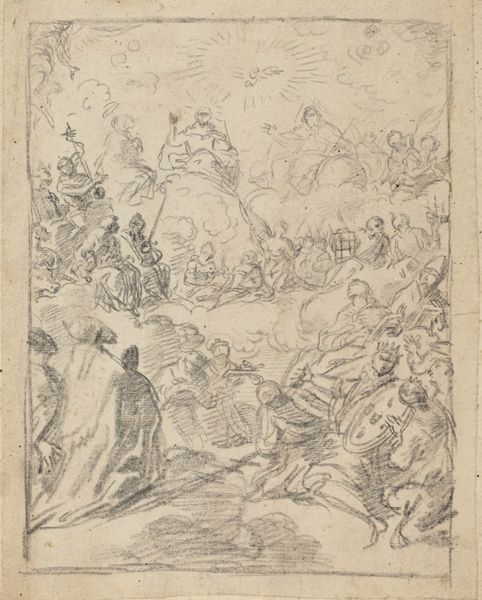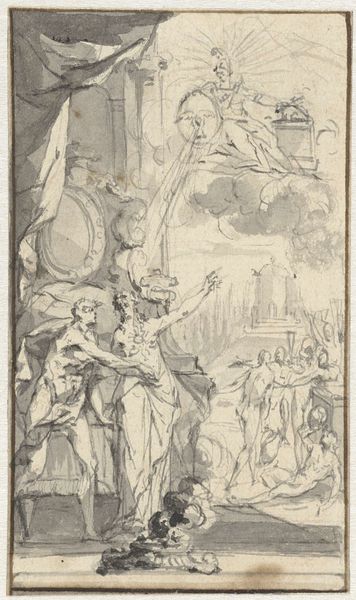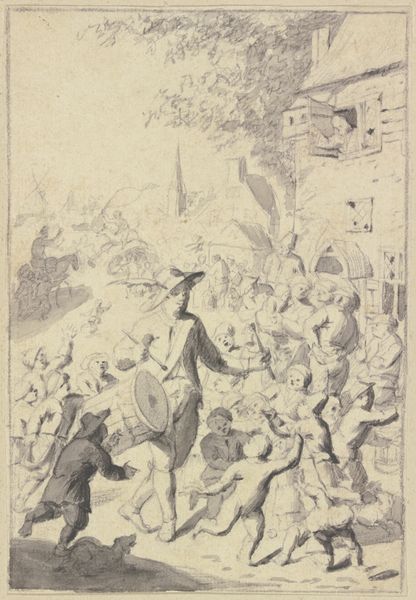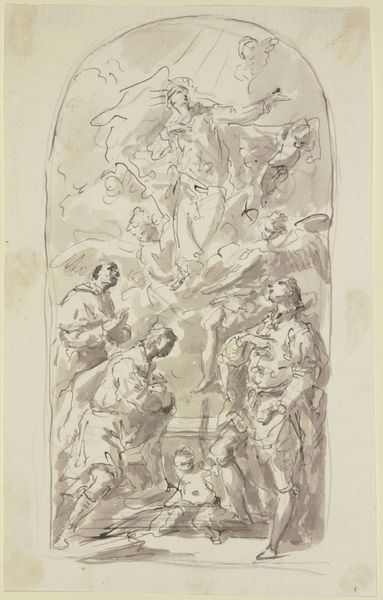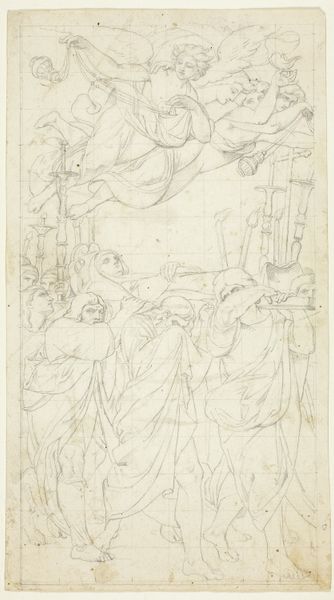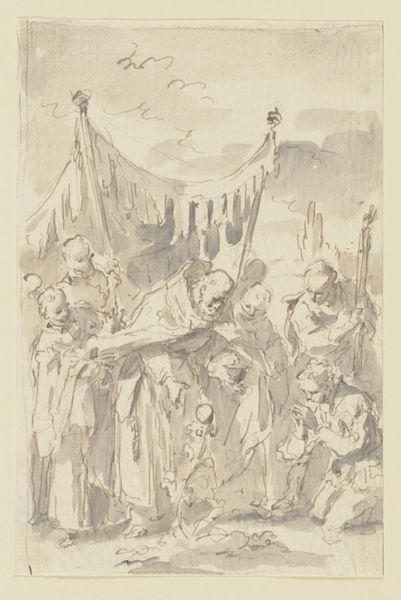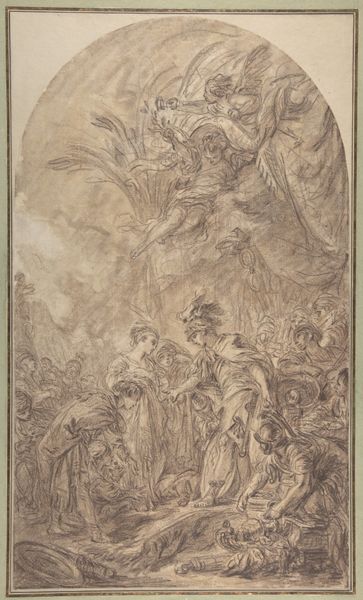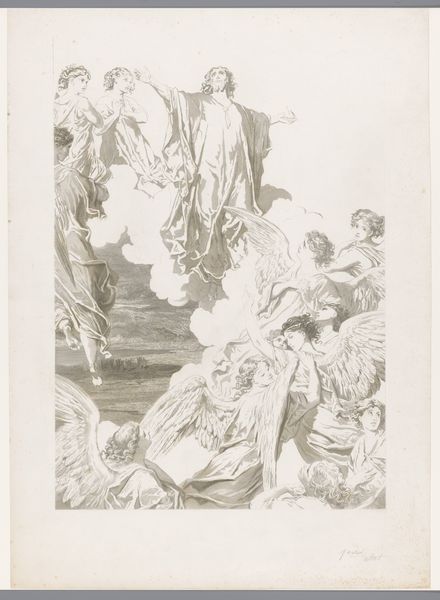
drawing, pencil
#
portrait
#
drawing
#
baroque
#
figuration
#
personal sketchbook
#
pencil
#
sketchbook drawing
#
history-painting
#
sketchbook art
Dimensions: height 221 mm, width 168 mm
Copyright: Rijks Museum: Open Domain
Editor: Here we have Pieter Jansz.’s “Frontispiece Design Sketch for Frederick Hendrick van Nassauw,” created around 1651, in pencil. It’s…intricate, almost chaotic, yet the figure at the top, presumably Frederick Hendrick, seems central. What strikes you about this piece? Curator: This sketch offers a fascinating glimpse into the visual language of power and representation in the 17th century. Forget simply the sitter - let's consider who benefits and who suffers within systems like monarchy. Think about the glorification of Frederick Hendrick and the implication of divine right. What does this visual rhetoric tell us about the socio-political structures of the Dutch Republic, and how they sought to legitimize authority? Notice, for instance, who are literally on the ground and being stood on... Editor: I see what you mean! It's not just a portrait of an individual, but a statement about the hierarchy, the beneficiaries, and potentially those excluded or oppressed by it. How does Jansz’s artistic style reinforce or perhaps question those power dynamics, even in just a sketch? Curator: The Baroque style, with its dynamism and grandiosity, often served the interests of the powerful. Yet, being a sketch, there is an inherent sense of exploration, an unveiling. I’d argue the sketch form allows Jansz a kind of raw commentary absent from a finalized presentation piece, and one can almost feel the pressure being placed on him by his subject. What’s absent speaks louder than what is present: there is no obvious religious imagery, but do angels themselves imply similar political statements about the power that sits atop them? Editor: That's such a great point. The unfinished quality allows us to consider the possible intention behind the ultimate design, and what role he and the work would ultimately perform in service of power. Curator: Precisely. Understanding these elements offers an opportunity to critically engage with historical power structures, and hopefully move towards justice and equality. Thank you for prompting such consideration, Editor: Thanks, I’ve never really thought about Baroque portraiture and inequality like that.
Comments
rijksmuseum about 2 years ago
⋮
In many instances, the sketches for title page designs have not been preserved. The Rijksmuseum is thus fortunate to own two successive drawings of the Triumph of Frederick Henry by Pieter Jansz, who was also active as a stained glass painter. They differ little from one another. Drawing with pencil, as used for this design sketch, allowed the artist to rub out mistakes and make changes: this was much more difficult to do with ink.
Join the conversation
Join millions of artists and users on Artera today and experience the ultimate creative platform.
